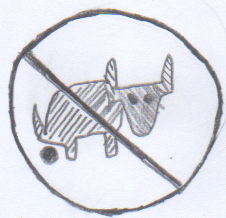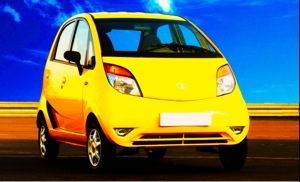Time is a unique resource. Everyone has the same 86,400 seconds a day – whether powerful or weak, rich or poor, senior or junior.
Over a lifetime, time does differentiate – longevity correlates to health, genes and circumstance.
In the same 31.536 million seconds a year, how do some people get more done ?
Think of a person walking in a straight line vs. a person turning at random every so often.
After a while, the person walking in a straight line may have walked less, but will be further away from the start point than the confused rambler.

In time, the gap widens, and the rambler wonders – how did the other guy get so far ahead ?
We can not ‘manage’ time, we can only manage ourselves.
By managing our priorities we manage our utilisation of time.
To have a productive, happy life – maximise purposeful movement towards a goal. Minimise aimless rambling.
At the same time, have fun and enjoy the scenery and companionship along the way.
When done well, these principles gives the illusion of ‘mastering time’.
First, set ONE core goal in a year. (if one not possible, set max 3 goals)
If you start today, decide what you will achieve before Dec 31 2014.
It is super critical to select a goal which will make you super successful, if achieved.
Its OK if the goal is audacious or difficult, but it MUST have a material impact.
If the goal is professional, you may want to start by asking your boss a simple question
‘What is the one thing you want me to deliver before Dec 31 which will make you super-successful this year ?’
This is a great test for your boss. If s/he is unable to answer this question, consider your options for moving on and finding a new boss.
Next, identify your time wasters.
Anything that doesn’t take you towards your goal is a ‘time waster’.
In a work context, these come in 2 buckets :
1. Habitual behaviours – things that you have ‘conditioned’ yourself to do – e.g.. read email, check social media etc.
2. Meetings – these may be ‘important’ but may not take you towards your goal.
Every evening, plan your next day using your calendar. Make sure a specific task related to your big goal is top of the list.
Set an out of office reply. Suggested text : ‘I am busy in meetings and will look at email only after 5 PM on XYZ date (next day). In case its a matter of life and death, reach me via text message/wechat/whatsapp’
Execute the following daily plan :
1. For the first 2 hours (most productive period) work exclusively on the big goal.
Refuse all meetings. Do not open email or log onto the internet. If you are in a cubicle wear headphones or book a meeting room and use it in private.
Even if you have no tasks for the big goal, work on it anyway – think about it, improve your plan, find a better way to get there.
In the last 15 minutes, log on to the internet and scan any developments or trends related to your long term goal. It helps to set up a standard Google search, or use a service like Pocket, Zite or Pulse to aggregate news in your area of focus.
Once a week scan LinkedIn for people who have skills relating to your goal.
At the end of the 2 hours, your ‘real work’ for the day is done.
You can then spend the rest of your time doing whatever you want or ‘need to’.
While it seems counterintuitive that you can ‘finish your work’ in 2 hours a day, remember that in 300 working days, you can spend 600 hours focused on your goal. There are very few projects or priorities that can not be cracked in 600 hours of single minded focus.
2. Take 30 minutes to batch process and clear your emails.
Force yourself to scan and deal with all pending email in 30 minutes.
It will be difficult at first but will become easy with practise.
Group emails by subject and look at the last email in the chain first. Look at the others only if needed.
Force yourself to either respond with a maximum 1 line answer or delete the email. In general don’t answer more than 10% of your email.
Remember – the less email you send out, the less you receive.
In case the email is very important, and you can’t answer in a few words, put in in a ‘pending’ folder. Have the discipline to not put more than 1-2 emails in this folder at this time.
3. Reward yourself for 30 minutes
Check your social media, do some of the things you like to do.
4. You are now open for meetings
Remember 3 rules for meetings :
a) Take 5 minutes before the meeting to write down your desired outcome at the end.
b) Limit each meeting to max 1hour, ideally 30 minutes. Where possible ask for a pre read and agenda. Start each meeting with the question ‘what so we need to achieve in the next 30 min’.
c) Have a conversation rather than a presentation. Steer the conversation towards your desired outcomes. Once achieved, leave.
5. Use lunch to have a ‘conversation’
Use lunch to have conversations which can help further your goal. This will infect other people with passion for your goal and will get you more support and ideas.
6. Do a daily walk around the office at least once
Chat with your colleagues. Often these interactions spur new ideas and help you develop an early waning system for issues.
7. At the end of the day, batch process email once again.
Clear your email including anything you put into ‘pending’ using the same rules as the morning.
Once your mailbox is empty, leave.
If you are unable to manage your mailbox to zero in the week, take a couple of hours extra on Friday or Saturday to manage the weeks accumulation to zero. Start each week with 0 emails in the inbox.
8. Every 2 weeks, meet someone new/external over coffee
LinkedIn is great to meet new people who have skills which can help with your big goal. You will be surprised how much new perspective and help you get.
9. Create a system to manage repetitive jobs
If your job is repetitive, you have a great opportunity – expend one time effort to create a system to automate the work. Free up 80% of your time to follow your goal.
With practise and determination, you will be able to stick to this schedule for 70%-80% of working days – Expect days where you compromise for travel, meetings, reviews with the boss, offsite meetings etc. When back to normal, get back to the system – make it a habit and don’t slip.
When done well, in my experience, this system :
1. Gets you promoted because you deliver the big stuff and make a real difference.
2. Allows you to have fun at work. You spend a lot of time in conversations – which helps you build relationship and belonging.
3. Forces you look outwards – so you grow and develop. You find new and unexpectedly creative ways to reach your goal. You become a thought leader in the organisation.
4. Gives you job satisfaction – imagine completing your work in the first 2 hours of the day and being ‘free’ thereafter !
By managing your priorities, you project the illusion of managing time.
So next time, don’t say you don’t have time – say its not a priority.
To read some of my older posts, please click the links below
Accelerate or die
Turbocharge your impact with 16 apps
Business and bacteria – how things grow
Failing to succeed
Colliding trends create mountains of opportunity
Chinese trains and Indian cars


























